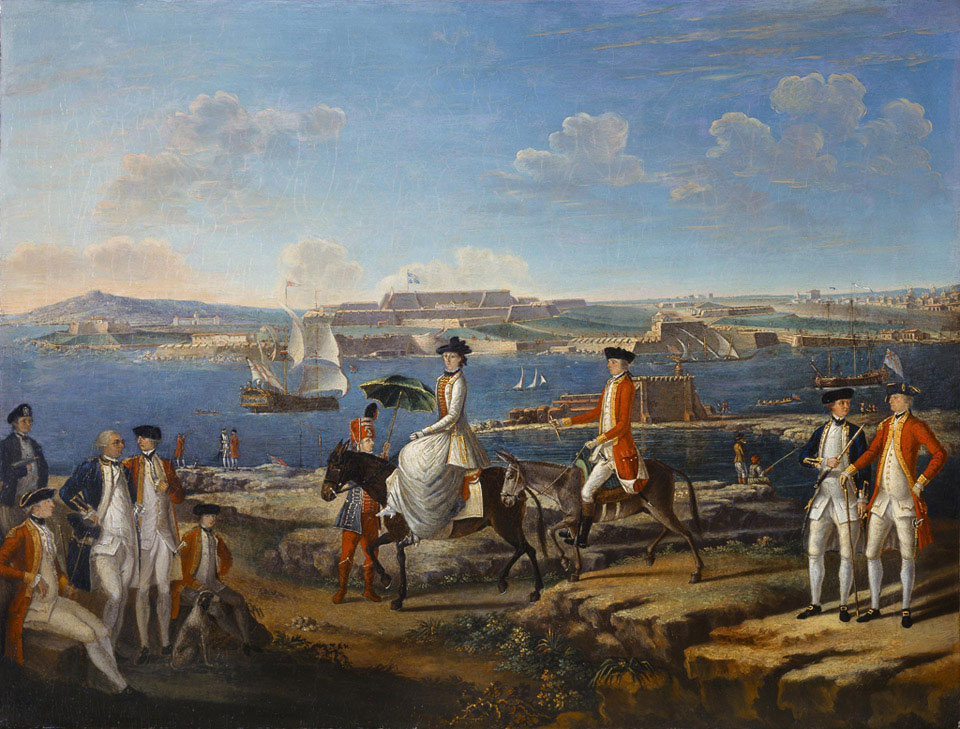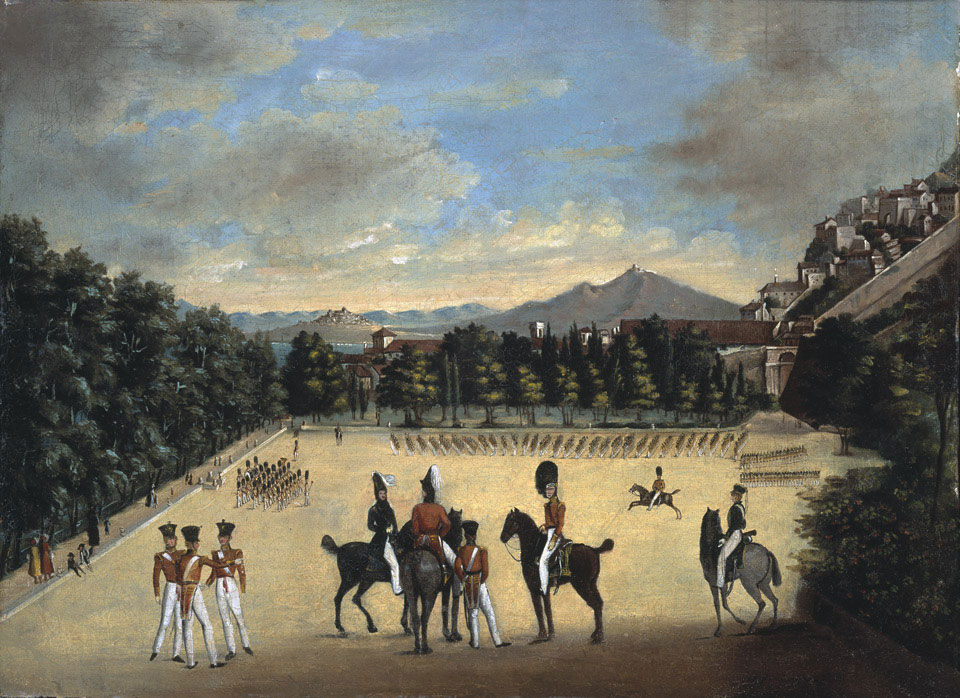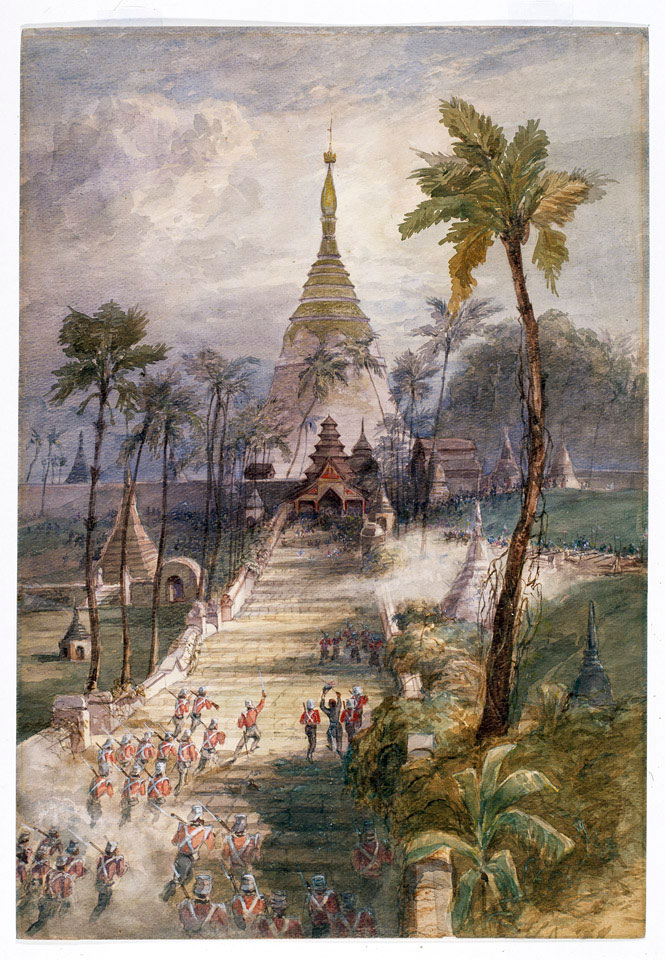Good morning and welcome back to Day 3 of @irelandbattles Irish Regiments in the British Army series.
Today we will take a look at our second regiment; the Royal Irish Regiment.
(“The Royal Irish Regiment”, from the Gale and Polden postcard series)
Today we will take a look at our second regiment; the Royal Irish Regiment.
(“The Royal Irish Regiment”, from the Gale and Polden postcard series)

2/ As noted in yesterday’s thread, the Royal Irish Regiment's origins lie in the recruitment of independent companies of musketeers and pikemen stationed in Ireland during the Interregnum and reign of Charles II.
In 1684, several of…
(“King Charles II” by John Michael Wright)
In 1684, several of…
(“King Charles II” by John Michael Wright)

3/…these companies were combined to form a new regiment on the Irish establishment (during this period, the British Army consisted of English and Irish ‘establishments’ - regiments were often hidden on the Irish establishment to hide their expenditure from the Treasury).
4/ Formed by the Earl of Granard (coat of arms pictured), the regiment was embroiled in the ‘Glorious Revolution’ of 1688 which saw the regiment split between those who supported James II and those who…
(UD Library: William Augustus Brewer Bookplate Collection. ID 4777)
(UD Library: William Augustus Brewer Bookplate Collection. ID 4777)

5/…who defected to William of Orange’s cause. In the aftermath of the conflict the regiment was placed on the English Establishment and would see service in Flanders during the Nine Years War. For their service at Namur (pictured) the regiment was retitled…
(NAM 1996-04-110-1)
(NAM 1996-04-110-1)

6/…the Royal Regiment of Foot of Ireland.
During the War of the Spanish Succession, the regiment served on land at the battles of Blenheim (pictured), Ramillies, Oudenarde, Malplaquet, and at sea as marines. At the conclusion of the conflict the regiment…
(NAM 1975-11-82-1)
During the War of the Spanish Succession, the regiment served on land at the battles of Blenheim (pictured), Ramillies, Oudenarde, Malplaquet, and at sea as marines. At the conclusion of the conflict the regiment…
(NAM 1975-11-82-1)

7/… spent a lengthy period in the Minorca Garrison from 1718-1745, interspersed with service during the 1727 Defence of Gibraltar.
The regiment was recalled to Britain to help suppress the 1745 Jacobite Uprising but arrived too late to participate in any…
(NAM 1974-02-122-1)
The regiment was recalled to Britain to help suppress the 1745 Jacobite Uprising but arrived too late to participate in any…
(NAM 1974-02-122-1)

8/…of the principal actions.
In common with other infantry regiments, the Royal Regiment of Foot of Ireland received a numerical designation in 1751 and was titled the 18th (The Royal Irish) Regiment, despite being the seventh most senior…
(NYPL catalog ID b14896507)
In common with other infantry regiments, the Royal Regiment of Foot of Ireland received a numerical designation in 1751 and was titled the 18th (The Royal Irish) Regiment, despite being the seventh most senior…
(NYPL catalog ID b14896507)

9/…infantry regiment. The reason for this discrepancy was that it had only entered the English establishment in 1689 and was predated by other regiments which, whilst raised at a later date than the 18th, had been entered onto the English establishment at an earlier date. 

10/ The 18th was stationed in various British and Irish garrisons from 1745-67 when it was posted to North America as the Seven Years War came to its conclusion.
The outbreak of the American Revolutionary War found the 18th stationed in Boston where it…
(NAM 1959-11-302-1)
The outbreak of the American Revolutionary War found the 18th stationed in Boston where it…
(NAM 1959-11-302-1)

11/…would experience severe fighting at Lexington, Concord & Bunker Hill.
Having taken significant casualties, the 18th was broken up, its officers returning to Britain to reraise the regiment whilst the other ranks were posted…
(“The Battle of Bunker Hill”, by Howard Pyle)
Having taken significant casualties, the 18th was broken up, its officers returning to Britain to reraise the regiment whilst the other ranks were posted…
(“The Battle of Bunker Hill”, by Howard Pyle)

12/…other regiments serving in the 13 Colonies. The newly reraised 18th Foot were initially stationed in the channel island where they helped to put down a mutiny by members of the 104th Regiment of Foot. In 1784 the 18th transferred to Gibraltar (pictured)…
(NAM 1999-04-21-1)
(NAM 1999-04-21-1)

13/…where it remained until the outbreak of the French revolutionary Wars in 1792.
In 1793 the 18th fought at the siege (and subsequent evacuation) of Toulon and later helped to capture…
(Burning of the Arsenal of Toulon, National Maritime Museum, Greenwich, London, PAD5444)
In 1793 the 18th fought at the siege (and subsequent evacuation) of Toulon and later helped to capture…
(Burning of the Arsenal of Toulon, National Maritime Museum, Greenwich, London, PAD5444)

14/…and garrison Corsica.
The 18th went on to serve in Italy, Minorca and Malta before forming part of Abercromby’s Expedition to Egypt in 1801. Here it fought at the battle of Alexandria and like other units of the expedition was awarded…
(NAM 1999-10-12-1)
The 18th went on to serve in Italy, Minorca and Malta before forming part of Abercromby’s Expedition to Egypt in 1801. Here it fought at the battle of Alexandria and like other units of the expedition was awarded…
(NAM 1999-10-12-1)

15/…the right to incorporate the Sphinx into its regalia.
Service in Britain followed where the regiment raised a 2nd Battalion. In 1809 both battalions were dispatched to the Caribbean helping to garrison Curacao (pictured), Jamaica and Saint Domingue.
(NAM 1971-02-33-136-1)
Service in Britain followed where the regiment raised a 2nd Battalion. In 1809 both battalions were dispatched to the Caribbean helping to garrison Curacao (pictured), Jamaica and Saint Domingue.
(NAM 1971-02-33-136-1)

16/ In 1814 the 2nd Battalion was disbanded and after seven years in British garrisons the 18th were dispatched to garrison Malta and the Ionian Islands from 1821-34.
After a short period in Ireland the 18th was…
(British troops in Corfu, c. 1830, NAM 2003-09-1-1)
After a short period in Ireland the 18th was…
(British troops in Corfu, c. 1830, NAM 2003-09-1-1)

17/…dispatched to South Asia, initially serving in Ceylon (modern Sri Lanka) before seeing service during the First Opium War in China fighting at all of the principal actions.
(“The 18th Regiment at the Storming of the Fortress of Amoy”, 26 August 1841, NAM 1971-02-33-36-1)
(“The 18th Regiment at the Storming of the Fortress of Amoy”, 26 August 1841, NAM 1971-02-33-36-1)

18/ The 18th subsequently fought during the 2nd Burma War (pictured) and in the Crimea where the regiment served at Sevastopol.
Like many senior infantry regiments the 18th were ordered to raise a second battalion in 1858, with many of its men being drawn…
(NAM 1968-03-40-1)
Like many senior infantry regiments the 18th were ordered to raise a second battalion in 1858, with many of its men being drawn…
(NAM 1968-03-40-1)

19/…from the Irish Militia. The 2nd Battalion later saw service in the New Zealand Wars.
Being comprised of two battalions, the 18th were not affected significantly by the Army Reforms conducted…
(“18th Royal Irish Regiment, Sebastopol, Crimea, May 1856”, NAM 1962-08-57-1)
Being comprised of two battalions, the 18th were not affected significantly by the Army Reforms conducted…
(“18th Royal Irish Regiment, Sebastopol, Crimea, May 1856”, NAM 1962-08-57-1)

20/…under Edward Cardwell in the 1860s & 70s, although the regiment received a depot at Victoria Barracks in Clonmel in 1873.
With the passing of the Childers' Reforms of 1881, the 18th were formally retitled “The Royal Irish Regiment” and became the county regiment of…
With the passing of the Childers' Reforms of 1881, the 18th were formally retitled “The Royal Irish Regiment” and became the county regiment of…

21/…Kilkenny, Wexford, Waterford and Tipperary.
After 27 years of service in India (including the 2nd Anglo-Afghan War), 1/Royal Irish returned to Britain with 2/Royal Irish seeing service during the Anglo-Egyptian War.
(“The Battle of Tel-el-Kebir”, by Alphonse de Neuville)
After 27 years of service in India (including the 2nd Anglo-Afghan War), 1/Royal Irish returned to Britain with 2/Royal Irish seeing service during the Anglo-Egyptian War.
(“The Battle of Tel-el-Kebir”, by Alphonse de Neuville)

22/ 1/Royal Irish would also see service in Africa, when it formed part of the ‘River Column’ during the Nile Expedition of 1884. It would return to the continent in 1899 for service during…
(Captain Walter Robert Butler Doran, Royal Irish Regiment, 1893, NAM 1982-04-411-141)
(Captain Walter Robert Butler Doran, Royal Irish Regiment, 1893, NAM 1982-04-411-141)

23/…the Anglo-Boer War. Meanwhile the 2nd Battalion, which garrisoned Malta and India from 1882-1902, served during the Black Mountain Expedition on India’s North Western Frontier in 1888.
('My Brave Irish', by Richard Caton Woodville, NAM. 1956-02-472-1)
('My Brave Irish', by Richard Caton Woodville, NAM. 1956-02-472-1)

24/ In 1911 1/Royal Irish was stationed in Agra (then part of the United Provinces, today Uttar Pradesh, India) and consisted of 31 officers 965 other ranks, leaving the regiment…
(The Royal Irish Regiment v The South Staffordshire Regiment at Simla, 1907, NAM 1962-08-50-3)
(The Royal Irish Regiment v The South Staffordshire Regiment at Simla, 1907, NAM 1962-08-50-3)

25/…below its nominal strength of 977 other ranks.
Almost 70% of the regiment’s soldiers were born in Ireland (672 individuals) with 41% of soldiers being born within the Royal Irish’s regimental district of Kilkenny (64), Tipperary (99), Waterford (110) and Wexford (119).
Almost 70% of the regiment’s soldiers were born in Ireland (672 individuals) with 41% of soldiers being born within the Royal Irish’s regimental district of Kilkenny (64), Tipperary (99), Waterford (110) and Wexford (119).

26/ The majority of the regiment’s soldiers were born in the South East of Ireland, although a significant minority of soldiers were born in County Dublin. Three counties – Armagh, Leitrim & Monaghan - failed to produce a single soldier for the battalion. 

27/ A significant number of soldiers were born outside of Ireland, the majority (247 individuals) being born in England, the largest groups hailing from the City of London & Middlesex (84) and Lancashire (42). A further 13 men were born in Scotland and seven in Wales. 

28/ 27 men were born Beyond Britain and Ireland's shores; 23 in India, two in Malta and one each in Australia and Burma. 

29/ When we compare the data of the 1911 Census to David French’s data from 1877-1900 (as highlighted in his ‘Military Identities’) we can see that the proportion of men serving within their local regiment has reduced - from 48% down to 41%. 

Fini/ Thank you for taking the time to read this thread, and please feel free to like, share and comment.
If you have found this thread interesting, you can find other threads in the wider British Army by searching for #BattalionCensus or following me at @MAJ_1868_1918
If you have found this thread interesting, you can find other threads in the wider British Army by searching for #BattalionCensus or following me at @MAJ_1868_1918
PS/ If you'd like to find out more about the Royal Irish Regiment, and haven't done so already, I'd heartily recommend revisiting @kayneagle's tweets from last week that appeared on this channel. She's an expert!
• • •
Missing some Tweet in this thread? You can try to
force a refresh















